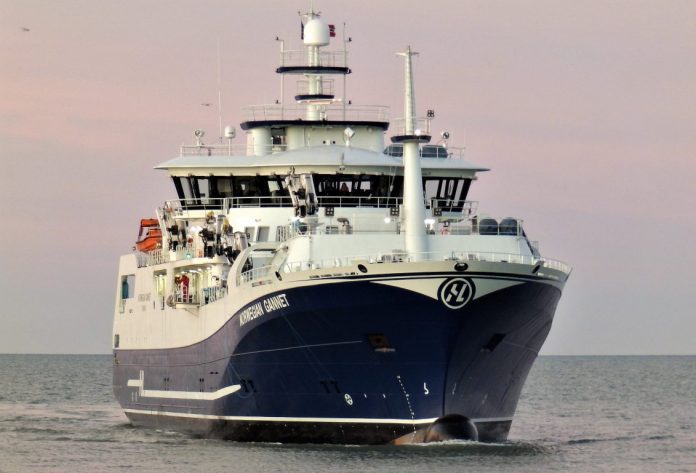Truck transport has faced major weather challenges this winter. At the same time, “Norwegian Gannet” ensures that Denmark is Norway’s largest salmon buyer so far this year.
Storms, along large parts of the Norwegian coast and also in Scottland and the Faroe Islands, have been the main topic of the salmon market these first weeks of 2020.
High waves and strong winds have made it challenging for the wellboats to retrieve fish from the cages and transport them to harvesting. Closed mountain crossings and cancelled ferry routes have caused delays in transport of salmon to the international markets.
Gridlocks
On slippery and icy winter roads, logistics has been the number one gridlock this year.
It has provided less fish to the market. Compared to the tonnage from 2019, Norway’s salmon exports have fallen 3.9 per cent so far in 2020.
The transit country of Denmark is the largest buyer of Norwegian salmon so far in 2020, shows export list from The Norwegian Seafood Council.
Exported more than Poland and France
4,864 tonnes of fresh salmon have been exported to Denmark in the first three weeks of January. Just a bit more than what major customers Poland and France have imported this year.
Most of the salmon exported to Denmark has been shipped with the “Norwegian Gannet” floating processor boat, which can carry up to 1,000 tonnes, equivalent to 50 truck loads, per trip. “Norwegian Gannet” fetches the fish from the cages. The fish is then harvested on board and transported to its own packing facility in Hirtshals. Consequently, the shipping line Hav Line, owner of “Norwegian Gannet” escapes the trouble with winter-closed and slippery roads.
According to the Marine Traffic website, “Norwegian Gannet” is located at the port of Hirtshals on Monday.
SalmonBusiness has tried, but failed, to get a comment on the matter from Hav Line’s CEO Kristian Haugland.


